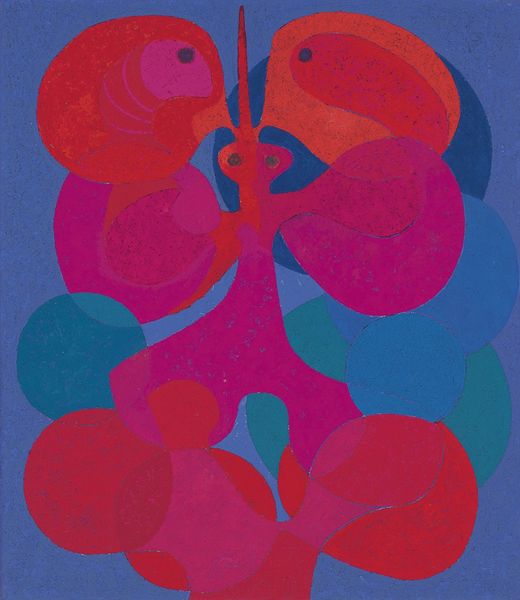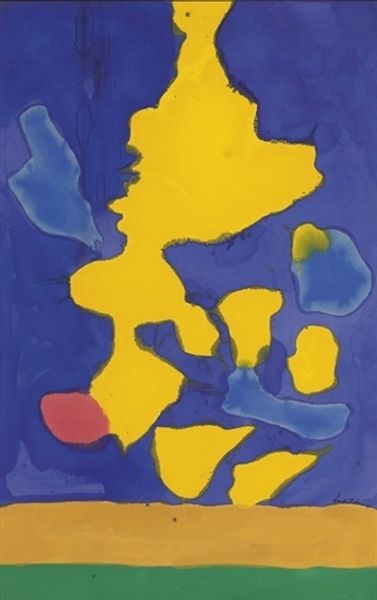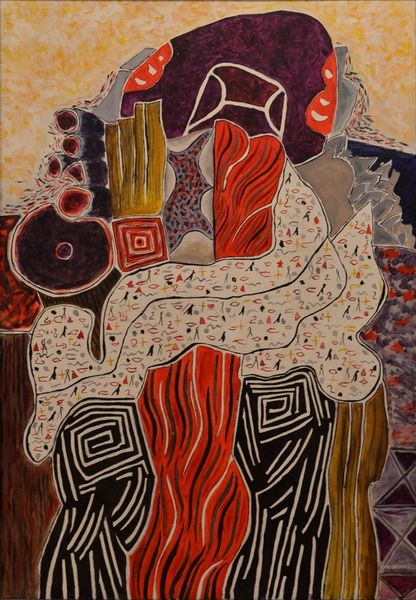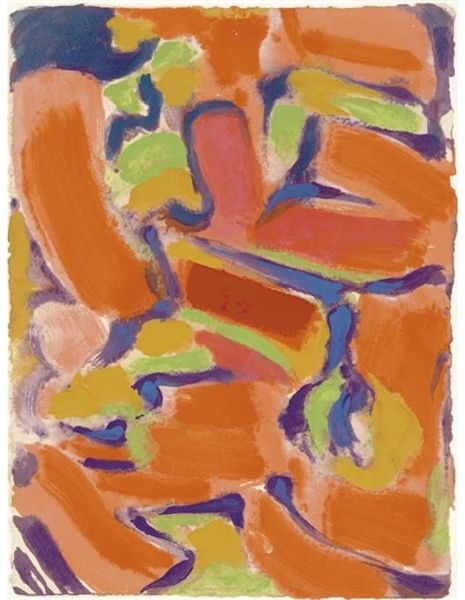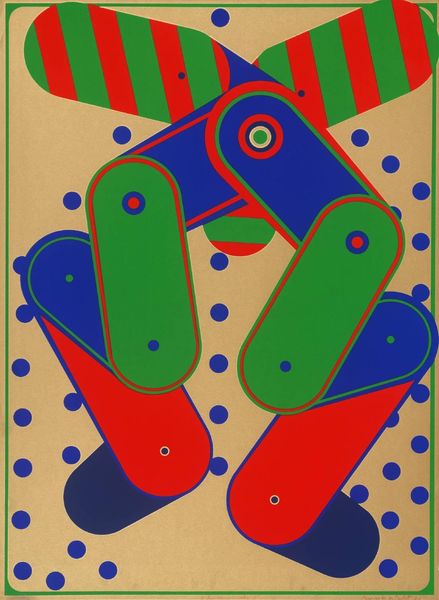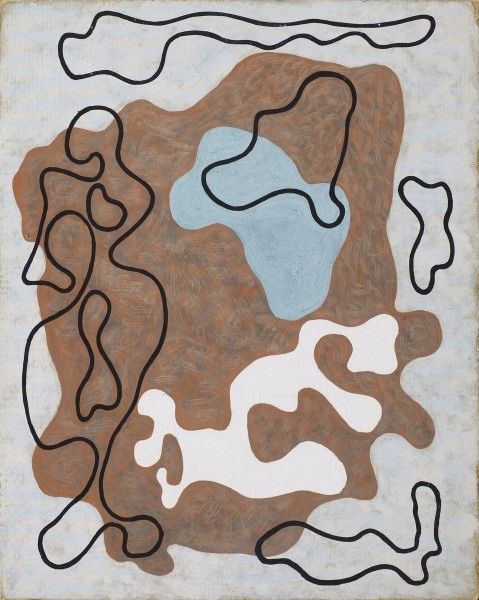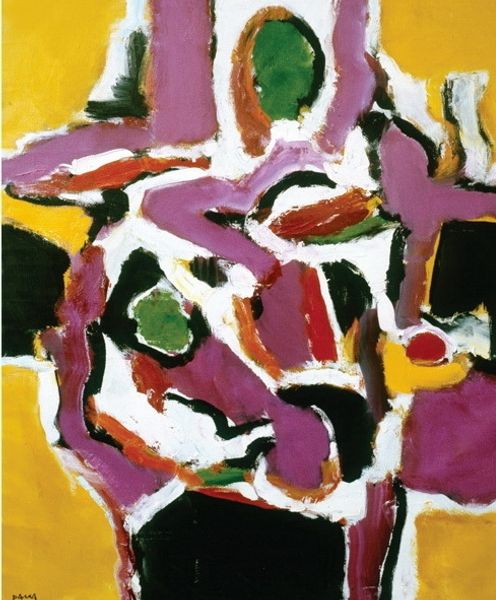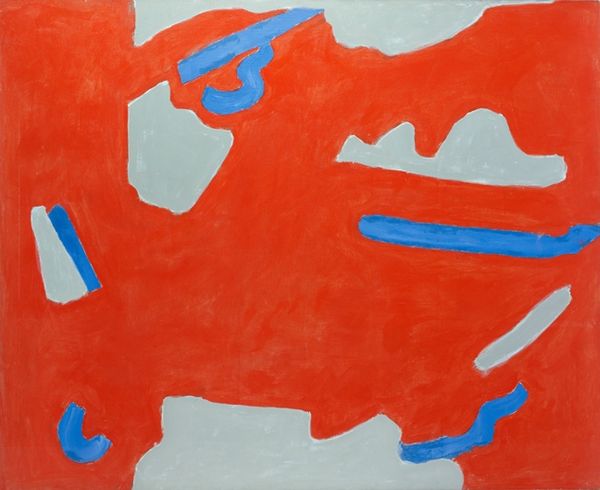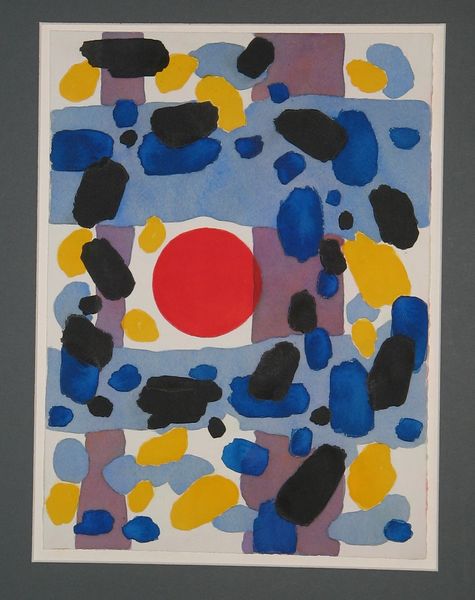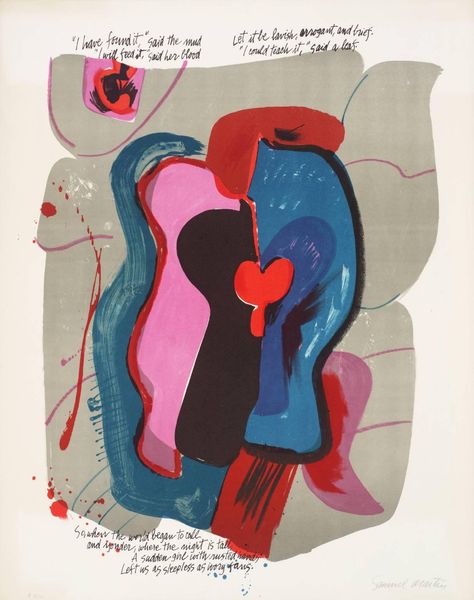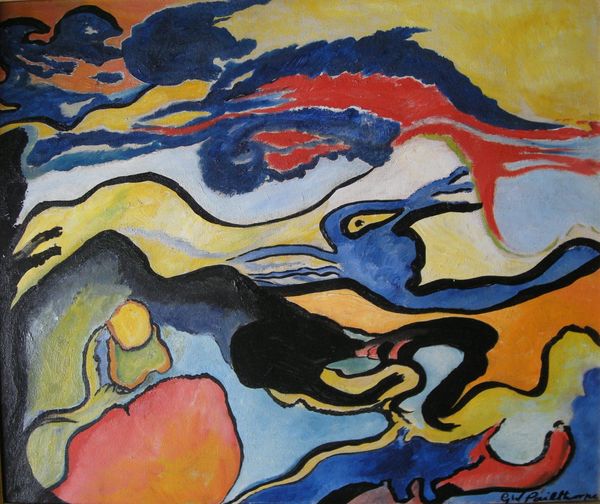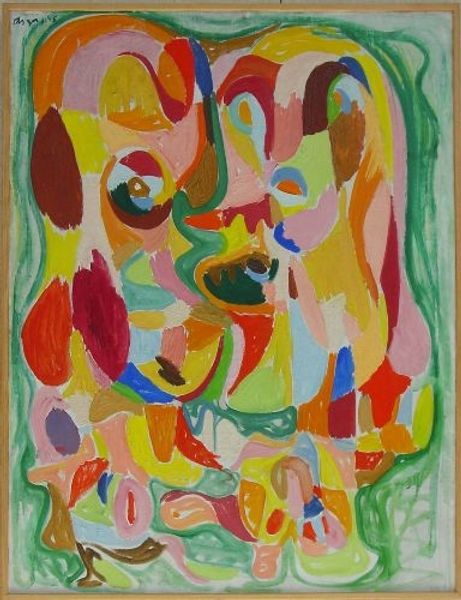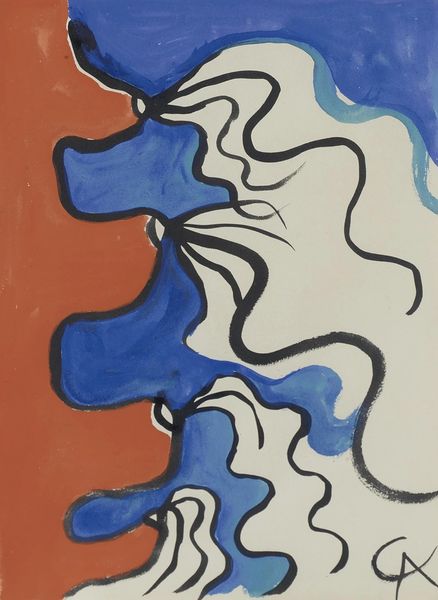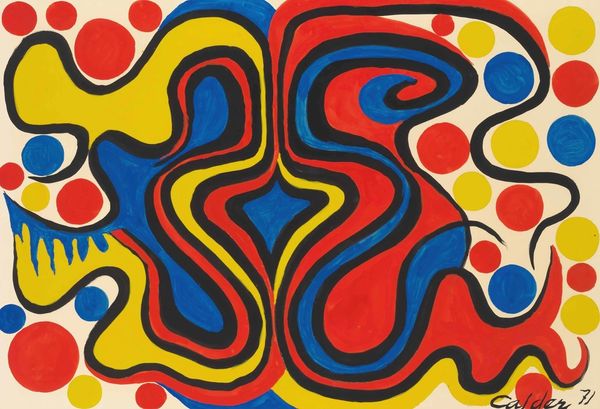
#
pop art-esque
#
popart
#
abstract painting
#
pop art
#
mural art
#
handmade artwork painting
#
tile art
#
acrylic on canvas
#
spray can art
#
pop art-influence
Dimensions: 35.5 x 26 cm
Copyright: Public domain US
Editor: This is David Kakabadze's "Sailboats," created in 1921. It's certainly… vibrant. The bold colors and simplified forms give it a really unique energy, almost like an abstracted, playful map. What do you see in this piece, beyond the obvious title? Curator: I see a fascinating dialogue happening between artistic movements and political upheaval. Kakabadze was working during a time of immense social and political change in Georgia, caught between revolution and the rise of Soviet power. So, "Sailboats" might seem like a simple, even joyful, image but consider what ‘sailing’ might represent in this context. Editor: Like, escaping? Or freedom? Curator: Precisely! And who gets to escape, or experience freedom? Notice the shapes themselves. They're contained, almost trapped, within the larger form. Is Kakabadze commenting on the limited freedoms even the avant-garde enjoyed during this period, particularly as a non-Russian artist navigating the Soviet cultural landscape? Editor: That's a completely different way of seeing it! I was just focusing on the surface level, the bright colors and shapes. Curator: But the surface is also crucial. Consider the use of bold color. Does it amplify a sense of freedom or does it highlight the artificiality and potential for propaganda in art? It invites us to consider the role of art itself in moments of profound social transformation, who controls it, and what narratives it subtly reinforces or subverts. Editor: It makes me wonder if "Sailboats" is more of a question than a statement. Curator: Absolutely. And I think that questioning is precisely where its power resides. We have to see it within these political and historical contexts, not simply as a formal experiment. Editor: I never would have considered all that just looking at the shapes and colours. I am looking at abstraction in a different way now. Thanks!
Comments
No comments
Be the first to comment and join the conversation on the ultimate creative platform.
